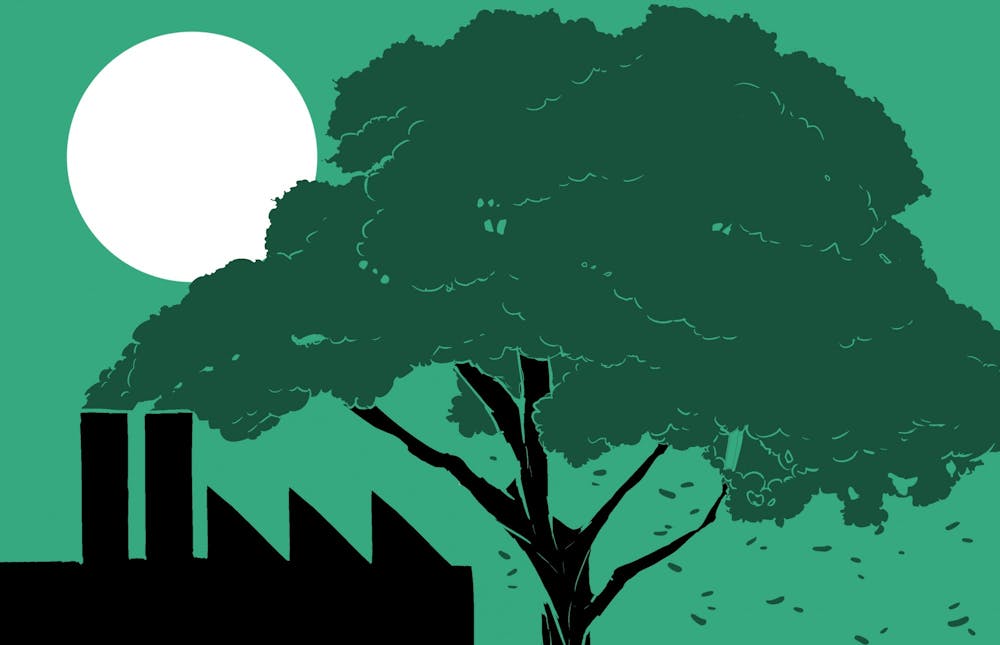ASU will plant a carbon sink and learning forest on the West campus in the fall 2020 semester to minimize the university's carbon footprint as part of its sustainability goals.
Located on a currently empty plot of land on the West campus, 1,000 desert trees will be planted to help meet ASU's goal of achieving carbon neutrality by 2025, said Corey Hawkey, the assistant director for University Sustainability Practices.
“We are leaders in sustainability and we want to reduce our carbon as much as we possibly can,” Hawkey said.
The trees are currently being grown by NAU at their Research Greenhouse. Although the Carbon Project website said the trees will be planted in March 2020, Hawkey said they will now likely be planted this upcoming November.
Each tree will cost around $44 and is being funded through a $10 fee the University charges for all ASU-sponsored round-trip flights, Hawkey said.
The forest will be used as a way of sequestering the carbon the University emits in the local area. To add further use to the forest, the space will be open for ASU researchers and classes to use in studies.
“We wanted a local solution that provided academic and research benefits to ASU,” Hawkey said.
Director of the Urban Climate Research Center David Sailor and associate professor at the School of Mathematical and Natural Sciences Becky Ball will both be conducting research at the site.
The Urban Climate Research Center will conduct research through a weather station that is being added slightly downwind from the center of the area to track how planting on such a large-scale will affect the microclimate of the local area, Sailor said.
Sailor said the main things they will be tracking are wind speed and direction, temperature, humidity and solar radiation.
Ball and her lab on the West campus will be comparing the amounts of carbon stored in the soil before and after the trees are planted at the campus.
Over the upcoming years, the lab will monitor the amounts of carbon stored in the soil to determine how much of a “carbon sink” the land is and how effective the trees are at minimizing the release of carbon by the University.
This monitoring will be done by students taking Ball's Environmental Science 410 course titled Soil Science. Both Ball and Sailor said results for their projects will take years to collect because it will take time for the forest to begin to impact the local ecosystem or store carbon in its soil.
“It will accumulate carbon,” Ball said. “How much carbon is accumulated will depend on how heavy the trees are, and how much they grow. Over the years, we won’t know how much of a sink it is until we start collecting data.”
Currently, both projects are in their beginning phases of collecting data on the land before the planting of the trees.
The space will be open to other professors and classes to conduct research over the coming years.
“This is truly a great example of using campuses as a living laboratory,” Hawkey said. “Not only are we getting a real benefit of carbon reduction, but we can actually have researchers use it to further what they're doing and also get classes involved.”
Reach the reporter at wmyskow@asu.edu and follow @wmyskow on Twitter.
Like The State Press on Facebook and follow @statepress on Twitter.

Wyatt Myskow is the project manager at The State Press, where he oversees enterprise stories for the publication. He also works at The Arizona Republic, where he covers the cities of Peoria and Surprise.




